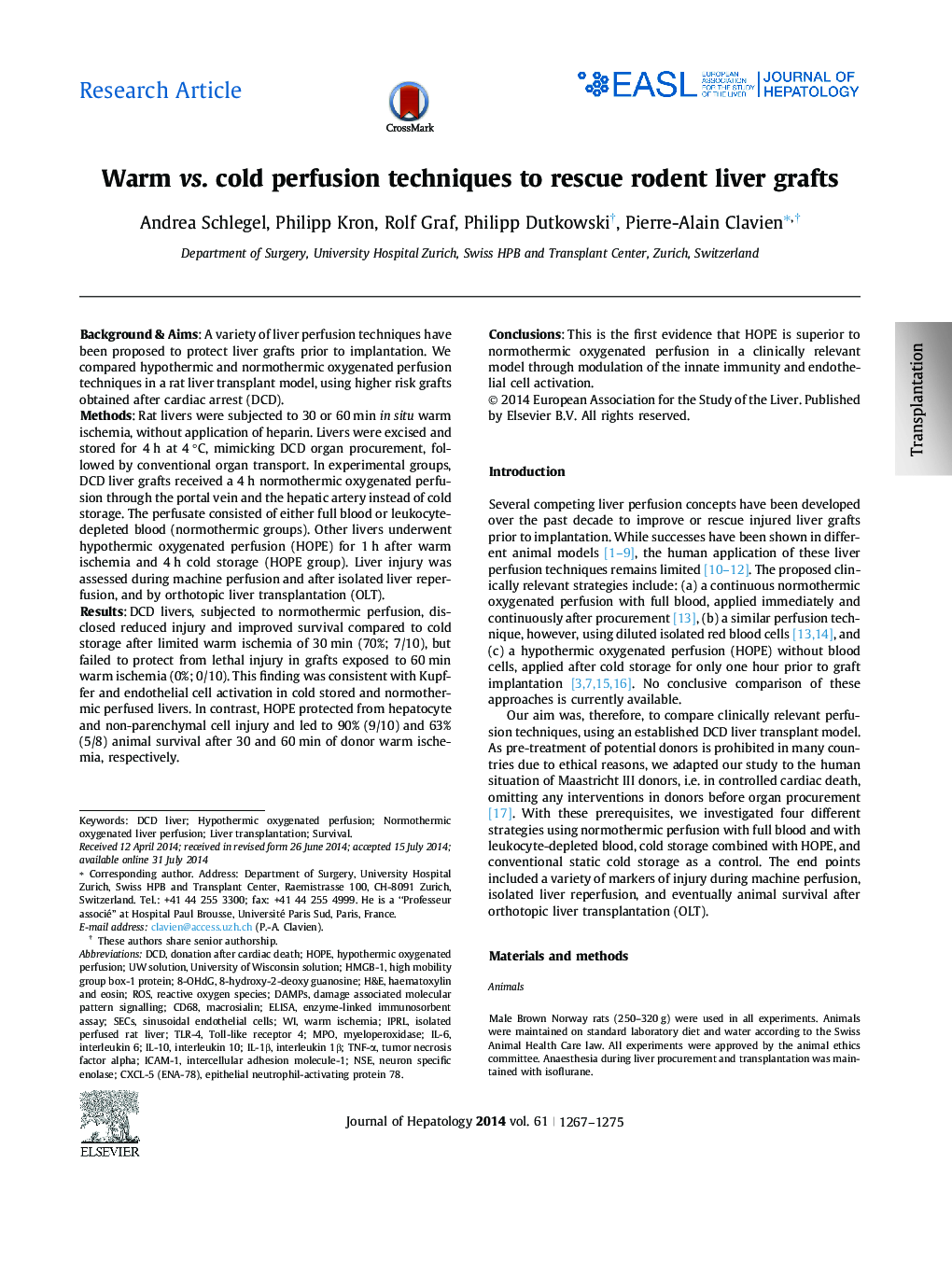| Article ID | Journal | Published Year | Pages | File Type |
|---|---|---|---|---|
| 6102344 | Journal of Hepatology | 2014 | 9 Pages |
Background & AimsA variety of liver perfusion techniques have been proposed to protect liver grafts prior to implantation. We compared hypothermic and normothermic oxygenated perfusion techniques in a rat liver transplant model, using higher risk grafts obtained after cardiac arrest (DCD).MethodsRat livers were subjected to 30 or 60 min in situ warm ischemia, without application of heparin. Livers were excised and stored for 4 h at 4 °C, mimicking DCD organ procurement, followed by conventional organ transport. In experimental groups, DCD liver grafts received a 4 h normothermic oxygenated perfusion through the portal vein and the hepatic artery instead of cold storage. The perfusate consisted of either full blood or leukocyte-depleted blood (normothermic groups). Other livers underwent hypothermic oxygenated perfusion (HOPE) for 1 h after warm ischemia and 4 h cold storage (HOPE group). Liver injury was assessed during machine perfusion and after isolated liver reperfusion, and by orthotopic liver transplantation (OLT).ResultsDCD livers, subjected to normothermic perfusion, disclosed reduced injury and improved survival compared to cold storage after limited warm ischemia of 30 min (70%; 7/10), but failed to protect from lethal injury in grafts exposed to 60 min warm ischemia (0%; 0/10). This finding was consistent with Kupffer and endothelial cell activation in cold stored and normothermic perfused livers. In contrast, HOPE protected from hepatocyte and non-parenchymal cell injury and led to 90% (9/10) and 63% (5/8) animal survival after 30 and 60 min of donor warm ischemia, respectively.ConclusionsThis is the first evidence that HOPE is superior to normothermic oxygenated perfusion in a clinically relevant model through modulation of the innate immunity and endothelial cell activation.
